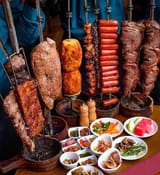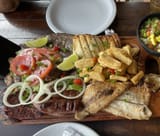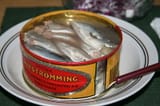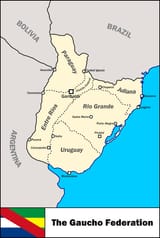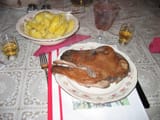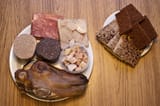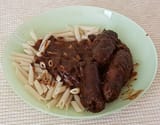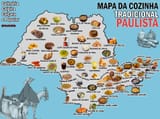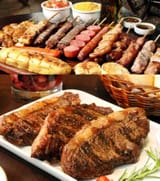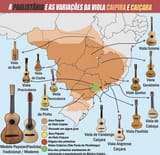>>212757986 (OP)
With influences primarily from Portuguese, Spanish, and Indigenous cuisines, the caipira cuisine is closely tied to the traditions of Bandeirantes and Tropeiros, their journeys required food that was easily transportable and could be consumed at any time. This led to the custom of creating mixed dishes, primarily with meats, grains, and vegetables. The virado is one of the oldest dishes mentioned, first referenced in 1602 during Nicolau Barreto's expedition to the territories now known as Paraguay, Bolivia, and Peru. It was prepared over an open fire. Over time, after the discovery of gold mines by the bandeirantes and the cultivation of crops at their ranches, new ingredients began to be used, such as kale and smoked sausage. From the virado, other dishes emerged, such as Virado de Castro and Virado Lapeano in Paraná, Tutu and Matula in Goiás, Virado à Paulista in São Paulo, Revirado de Feijão in the Gaucho and Catarinense highlands, Tutu à Mineira, Feijão Tropeiro (common in various countryside regions), Kaol from Belo Horizonte, and many other variations.
The ingredients are diverse, but I highlight pork, corn, and carioca beans. Traditional ingredients also include chicken, beef, kale, rice, okra, peanuts, coffee and more. Of course, there are also ingredients specific to regions of Paulistânia, such as yerba mate, pine nuts, ants (içá), various fish, pequi, quince, and others.
Some famous dishes include feijão tropeiro, galinhada, pamonha, curau, biscoito de polvilho, caipirinha, angu, Minas and Canastra cheeses, virado à paulista, tereré, quentão, vaca atolada, bolo de milho, bolinho de chuva, leitão à pururuca, paçoca, tutu de feijão, doce de abóbora, and many others.
 7/14/2025, 5:25:18 PM
No.212757986
[Report]
>>212758077
>>212758337
>>212758434
>>212758485
>>212758763
>>212758795
>>212758805
>>212759032
>>212759037
>>212759541
>>212759542
>>212759628
>>212761910
>>212762091
>>212763556
>>212763917
>>212766284
>>212768123
>>212771842
>>212771991
7/14/2025, 5:25:18 PM
No.212757986
[Report]
>>212758077
>>212758337
>>212758434
>>212758485
>>212758763
>>212758795
>>212758805
>>212759032
>>212759037
>>212759541
>>212759542
>>212759628
>>212761910
>>212762091
>>212763556
>>212763917
>>212766284
>>212768123
>>212771842
>>212771991

